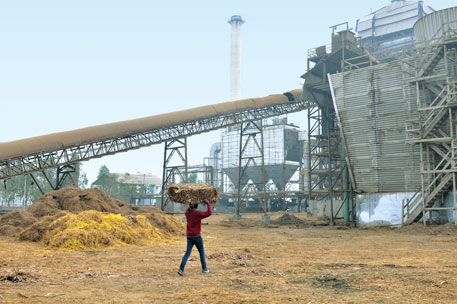Stored paddy worth Rs 840 crore spoiled in five years in TN
By B Anbuselvan
Despite ongoing efforts to expand storage infrastructure, Tamil Nadu suffered wastage of 3.72 metric tonnes (MT) of paddy/rice stored at direct procurement centres and warehouses from 2019-20 to 2023-24 at a minimum estimated financial loss of around Rs 840 crore. TNIE obtained this data through Right to Information (RTI) Act requests made to the Tamil Nadu Civil Supplies Corporation (TNCSC). The actual financial loss, which was not fully disclosed by TNCSC, could be higher.
TNIE acquired this information after multiple RTI requests and appeals, following delays and denials from TNCSC. The data revealed that between 65,000 MT and 1.25 lakh MT of paddy/rice was lost annually due to various factors. Losses were particularly higher in the districts of Tiruvarur, Thanjavur, Nagapattinam and Pudukottai.
In 2021-22, an alarming 1.37 lakh MT of paddy/rice was wasted across the state. During that year, a total of 43.27 lakh MT of paddy was procured, which was subsequently converted into 28.5 lakh MT of rice. The annual expenditure for paddy procurement is Rs 5,000 to Rs 6,500 crore depending on the minimum support price (MSP) and paddy cultivation.
Several factors contributed to these storage losses, including inadequate or poorly-maintained storage facilities — such as those with leaky roofs, cracked walls and open storage areas — improper drying of paddy, leading to high moisture levels; infestations by rodents and insects and rough handling during loading.

‘Storage losses have declined in recent years’
Moreover, delays in processing paddy into rice and exposure to adverse weather at open procurement centres in the delta districts, also contribute to such losses. TNCSC, the designated nodal agency for paddy procurement under the Public Distribution System (PDS) for both the state and central governments, procures paddy directly from farmers or through an authorised union government agency.
TNCSC officials stated that storage losses have declined substantially in recent years, with new facilities being constructed to mitigate these issues. “Losses caused by infestations, poor godown maintenance and administrative lapses are being recovered from the officials responsible. The permitted storage loss is 1%,” said one official. They further noted that TN’s storage losses are comparatively lower than those in other states. Issues such as open storage and spoilage due to rainfall and adverse weather conditions have been significantly reduced over the past four years.
“We have implemented deadlines for transferring procured paddy from farmers to godowns and rice mills at regular intervals. However, a large quantity of paddy at direct procurement centres (DPCs) is still damaged each year due to rain and unfavourable weather conditions. The permissible moisture content for paddy is 17%, but during the September-October monsoon, moisture levels often rise to 19-21% in the delta region,” explained an official.
According to official data, Tamil Nadu currently has 259 operational godowns with a total storage capacity of 9.14 lakh MT, 123 buffer godowns with a capacity of 9.08 lakh MT, and 23 plinths with semi-covered sheds providing a capacity of 3.63 lakh MT.
To further reduce losses, TNCSC has proposed constructing six modern rice mills with a combined capacity of 2,700 MT. These mills will help address issues related to high-moisture paddy and open storage. The new facilities will include equipment to dry paddy with higher moisture content and package it into 100kg or 50kg rice bags. Of these, one mill with a capacity of 200 MT will be established in Theni, while five mills with a capacity of 500 MT each will be set up in Thanjavur (2), Thiruvarur (2) and Cuddalore (1), said officials.
This article has been republished from The New Indian Express.

